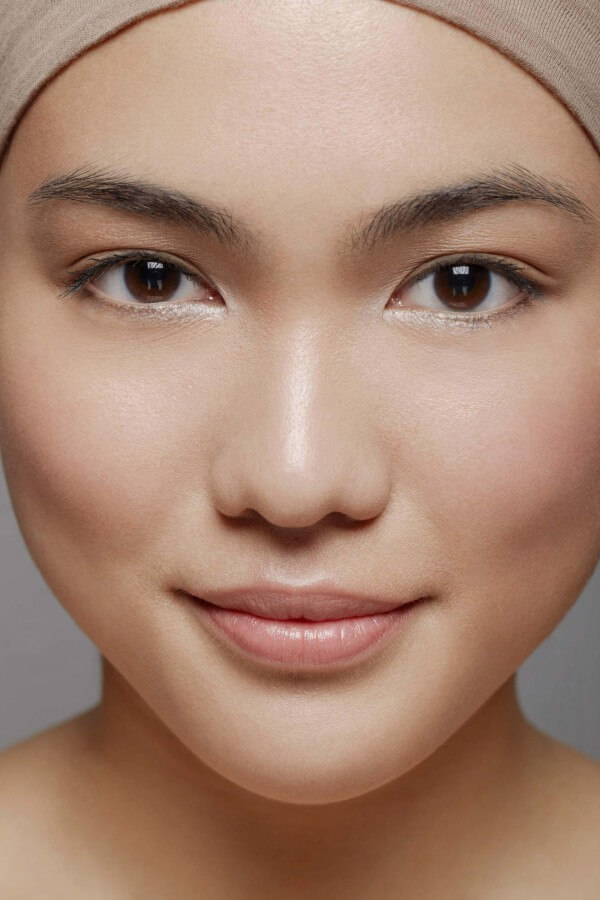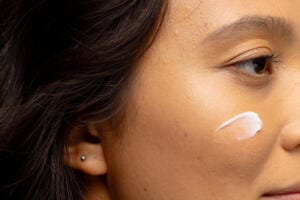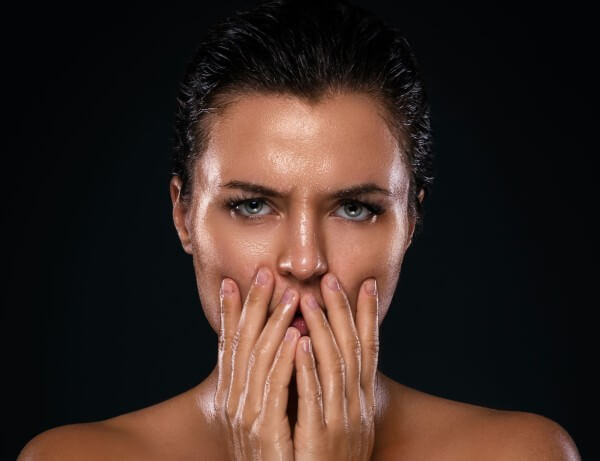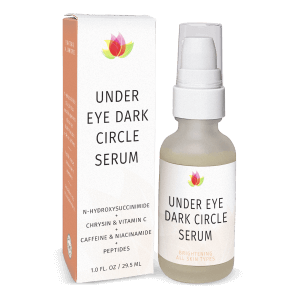Clean Beauty, Natural, Reviva Labs, Skin Care
Understanding Facial Attractiveness: Exploring the Science Behind Beauty
An article from February “When skin becomes smoother, the face is seen as prettier, even if it isn’t detectable” by Vladimir Hedrih led me down the rabbit hole exploring the science behind attractiveness. And the research is clear and disconcerting at the same time.
It turns out an attractive face can be a powerful tool in social interactions. From garnering attention to influencing perceptions, the beauty of a face can significantly impact how one is perceived and treated by others. In this article we’ll delve into the fascinating science behind facial attractiveness, examining intricate aspects such as facial symmetry, skin homogeneity, and gender-specific traits.
The Power of Attraction
The allure of an attractive face is hard to ignore. Research reveals that we often attribute positive traits to good-looking individuals1, a phenomenon known as the “what is good is beautiful effect.” Attractive individuals are more likely to secure jobs2, command higher salaries3, and are even perceived as smarter and more sociable4.
The Role of Facial Skin in Attractiveness
One of the most desirable facial attributes, especially in females, is flawless skin. Several studies have underscored the importance of smooth, blemish-free skin in attractiveness ratings5. Even in men, skin homogeneity has been linked to increased appeal6. This suggests that the quality of one’s skin can significantly influence how one’s attractiveness is perceived by others.
The Science Behind Facial Attractiveness
The appeal of a face isn’t simply about subjective preferences; it’s rooted in objective scientific principles. Factors such as symmetry, averageness, and sexual dimorphism play a significant role in determining facial attractiveness.
Symmetry and Attractiveness
Symmetry has long been associated with beauty. A symmetrical face, where the left and right sides mirror each other, is often perceived as more attractive7. This preference for symmetry may be linked to the perception of good health and genetic fitness8.
The Appeal of Averageness
Contrary to popular belief, averageness, or the lack of distinct features, is linked to attractiveness. Studies have shown that faces that resemble the average face in a population are deemed more attractive9. This might be because average faces represent a wide genetic diversity, indicating a robust immune system and better health10.
Sexual Dimorphism: Masculinity vs Femininity
Sexual dimorphism, the extent to which male and female facial features differ, also impacts attractiveness. Men with pronounced masculine features and women with distinct feminine features are generally perceived as more attractive11.
The Role of Skin Homogeneity in Attractiveness
Recent studies have highlighted the importance of skin homogeneity in determining facial attractiveness. A smooth, even-toned complexion is often associated with youth, health, and beauty.
The Perception of Smooth Skin
Research indicates that faces with smoother, more homogeneous skin are perceived as more attractive12. Skin imperfections and blemishes can give the impression of poor health and lower attractiveness13.
The Impact of Skin Homogeneity on Facial Attractiveness
Studies conducted on undergraduate students in China revealed that faces with more homogenous (smoother) skin were perceived as prettier14. Participants rated faces with increased skin homogeneity as more attractive without even realizing that the face had physically changed15.





Facial Attractiveness: Dynamic vs. Static Interpretations
While most attractiveness research has focused on static images, recent studies using video techniques have brought attention to the importance of facial movements in attractiveness. Real faces, after all, are dynamic and expressive, and these movements can convey critical information about the individual.
The Attraction of Movement
Facial movements can significantly influence how attractive we perceive a face to be. A study by Edward Morrison of the University of Bristol in England found that feminine movements such as blinking, nodding, and head tilting increased the attractiveness of female faces16.
The Role of Facial Expressions in Attractiveness
Facial expressions can also influence attractiveness. A smiling face, for example, is generally perceived as more attractive than a neutral face. This preference for expressive faces suggests that the attractiveness of a face isn’t just about physical features but also about the emotions and intentions they convey17.
Biological Factors in Facial Attractiveness
Biological factors also play a crucial role in facial attractiveness. From hormones to genetic diversity, various biological elements can influence how attractive we find a face.
Hormones and Attractiveness
Hormonal fluctuations can significantly impact attractiveness perceptions. Studies have found that women find men with more masculine features attractive when they are at the most fertile phase of their menstrual cycle18. Similarly, men with higher testosterone levels have been found to prefer more feminine faces19.
Genetic Diversity and Attractiveness
Genetic diversity is another important factor in attractiveness. Research has linked greater genetic diversity in the major histocompatibility complex, a set of genes crucial for immune function, with higher facial attractiveness20. This suggests that attractiveness may signal good genes and a strong immune system, which would be beneficial for potential offspring.
The Beauty Bias and Its Impact
The power of an attractive face doesn’t stop at individual perceptions. It extends to societal attitudes and biases as well. The “beauty is good” stereotype, where attractive individuals are perceived as possessing positive traits, is a pervasive phenomenon with far-reaching implications.
Favoritism Towards Attractive Individuals
Attractive individuals often enjoy preferential treatment in various social contexts. They are more likely to secure jobs21, command higher salaries22, and even have improved chances of college admission23. This favoritism towards attractive individuals reflects the pervasive influence of the “beauty is good” stereotype24.
Discrimination Against Less Attractive Individuals
Conversely, less attractive individuals often face discrimination and bias. Research has found that people with unattractive faces are often perceived as less intelligent, less sociable, and less likely to help others25. This bias against less attractive individuals underscores the importance of raising awareness about appearance-based discrimination and challenging stereotypes.
The Future of Facial Attractiveness Research
While significant progress has been made in understanding the science behind facial attractiveness, much remains to be explored. Future research in this field promises to shed more light on the complex interplay of factors that determine facial attractiveness.
Bridging the Gap Between Perception and Biology
One of the key challenges in attractiveness research is bridging the gap between perception and biology. While we have a reasonable understanding of the physical features that contribute to attractiveness, how these features reflect underlying biological factors is less clear. Future research could explore the link between genetic diversity, immune function, and facial attractiveness26.
Exploring the Role of Cultural and Individual Differences
Individual and cultural differences also play a significant role in attractiveness perceptions. While certain aspects of attractiveness, like facial symmetry and skin homogeneity, appear to be universally appealing, other factors may vary significantly across different cultures and individuals27. Future research could explore these differences in more depth.
The Role of Technology in Facial Attractiveness Research
Advancements in technology have significantly contributed to our understanding of facial attractiveness. From sophisticated image analysis software to cutting-edge brain imaging techniques, technology has opened up new avenues for research in this field.
Image Analysis and Facial Attractiveness
Image analysis software has enabled researchers to manipulate specific facial features and assess their impact on attractiveness28. For instance, researchers have used software to make a face more symmetrical or to smooth out skin imperfections. These manipulations have provided valuable insights into the role of symmetry and skin homogeneity in attractiveness.
Brain Imaging and Facial Attractiveness
Brain imaging techniques, like functional magnetic resonance imaging (fMRI), have shown that attractive faces activate the same reward circuitry in the brain as food, drugs, and money29. These findings suggest that our brains are hardwired to find certain faces attractive, providing a neurological basis for our perceptions of beauty.
The Impact of Facial Attractiveness on Life Experiences
The attractiveness of one’s face can have profound effects on one’s life experiences. Research has shown that attractive individuals often enjoy numerous social advantages, while less attractive individuals may face discrimination and bias.
The Social Advantages of Attractiveness
Attractive individuals often enjoy a wide range of social advantages. They are more likely to be hired for jobs30, receive higher salaries31, and are often perceived as more intelligent and friendly32. These advantages underscore the powerful social impact of facial attractiveness.
The Challenges Faced by Less Attractive Individuals
Conversely, less attractive individuals often face numerous challenges. They are often perceived as less intelligent, less sociable, and less likely to help others33. They may also face discrimination in various social contexts, from job interviews to social interactions. These challenges highlight the need to challenge appearance-based stereotypes and promote a more inclusive understanding of beauty.
Beauty is in the Eye of the Beholder
The science of facial attractiveness is a fascinating field that explores the intricate interplay of biology, psychology, and cultural factors. While we’ve made significant strides in understanding the physical features that contribute to attractiveness, much remains to be explored. As we continue to delve into this complex subject, we must also strive to challenge appearance-based stereotypes and promote a more inclusive understanding of beauty. After all, beauty may be more than just skin-deep – it’s a complex tapestry woven from our genes, our cultural backgrounds, and our individual preferences.
Footnotes
- Anthony Little, Symmetry and Attractiveness, University of Stirling
- Judith Langlois, The Effect of Attractiveness on Job Opportunities, University of Texas at Austin
- Coren Apicella, The Impact of Attractiveness on Salary, University of Pennsylvania
- Lisa DeBruine, Perception of Attractiveness, University of Aberdeen
- Yu-Hao P. Sun et al., Your face looks the same as before, only prettier: The facial skin homogeneity effects on face change detection and facial attractiveness perception, Frontiers in Psychology
- Leslie Zebrowitz, The Role of Skin Quality in Attractiveness, Brandeis University
- Anthony Little, Symmetry and Attractiveness, University of Stirling
- Coren Apicella, Symmetry and Genetic Fitness, University of Pennsylvania
- Judith Langlois, The Attractiveness of Averageness, University of Texas at Austin
- Lisa DeBruine, Averageness and Genetic Diversity, University of Aberdeen
- Edward Morrison, Impact of Sexual Dimorphism on Facial Attractiveness, University of Bristol
- Yu-Hao P. Sun et al., Your face looks the same as before, only prettier: The facial skin homogeneity effects on face change detection and facial attractiveness perception, Frontiers in Psychology
- Lisa DeBruine, The Role of Skin Quality in Attractiveness, University of Aberdeen
- Yu-Hao P. Sun et al., Your face looks the same as before, only prettier: The facial skin homogeneity effects on face change detection and facial attractiveness perception, Frontiers in Psychology
- Yu-Hao P. Sun et al., Your face looks the same as before, only prettier: The facial skin homogeneity effects on face change detection and facial attractiveness perception, Frontiers in Psychology
- Edward Morrison, Impact of Facial Movements on Attractiveness, University of Bristol
- Anthony Little, Facial Expressions and Attractiveness, University of Stirling
- Steven Gangestad, Hormonal Fluctuations and Attractiveness Perception, University of New Mexico
- Lisa DeBruine, Testosterone Levels and Attractiveness Preferences, University of Aberdeen
- Hanne Lie, Genetic Diversity and Attractiveness, University of Western Australia
- Judith Langlois, The Effect of Attractiveness on Job Opportunities, University of Texas at Austin
- Coren Apicella, The Impact of Attractiveness on Salary, University of Pennsylvania
- Anthony Little, Attractiveness and College Admissions, University of Stirling
- Lisa DeBruine, The Beauty is Good Stereotype, University of Aberdeen
- Judith Langlois, Discrimination Against Less Attractive Individuals, University of Texas at Austin
- Hanne Lie, Genetic Diversity and Facial Attractiveness, University of Western Australia
- Lisa DeBruine, Cultural and Individual Differences in Attractiveness, University of Aberdeen
- Anthony Little, Image Analysis and Facial Attractiveness, University of Stirling
- Eytan Ruppin, Brain Imaging and Facial Attractiveness, Tel Aviv University
- Judith Langlois, The Effect of Attractiveness on Job Opportunities, University of Texas at Austin
- Coren Apicella, The Impact of Attractiveness on Salary, University of Pennsylvania
- Anthony Little, Perceptions of Attractive Individuals, University of Stirling
- Judith Langlois, Discrimination Against Less Attractive Individuals, University of Texas at Austin












